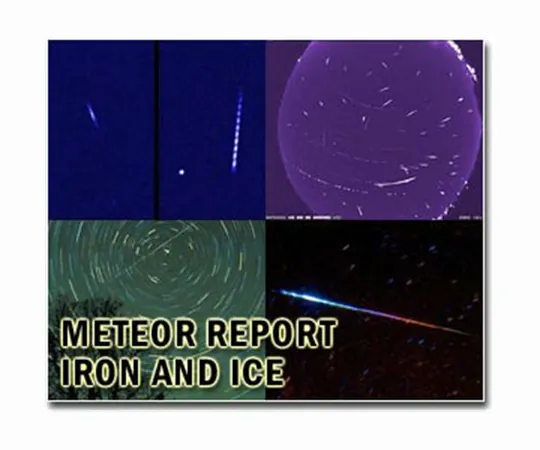
Incredible Discovery: Mudball Meteorite Defies Expectations in Costa Rica!
2025-04-01
Author: Rajesh
Introduction
An astonishing tale of cosmic resilience has emerged from an international scientific team who has revealed new insights about a unique meteorite that fell in April 2019 near Aguas Zarcas, Costa Rica. Dubbed a "mudball" meteorite, this celestial rock has shattered previously held beliefs about its strength and durability.
Significance of the Aguas Zarcas Meteorite
According to meteor astronomer Peter Jenniskens, affiliated with both the SETI Institute and NASA Ames Research Center, the Aguas Zarcas event resulted in the recovery of 27 kilograms of meteorite material, marking the largest such fall since the remarkable Murchison meteorite event in Australia back in 1969. This earlier phenomenon had occurred just months after humans first set foot on the Moon and has served as a significant landmark in planetary science. In a similar vein, the Aguas Zarcas meteorite has become a pivotal topic among researchers, inspiring the publication of 76 scholarly articles to date.
Cultural Impact
The recovery was not just a scientific achievement but a cultural one as well; it became a nationwide sensation in Costa Rica. Geologist Gerardo Soto from the University of Costa Rica reported that the fall was met with unprecedented media attention, highlighting the public’s excitement over such a rare event.
Meteor's Trajectory and Recovery
Utilizing footage captured by video cameras, researchers were able to meticulously reconstruct the meteor's striking trajectory. The data revealed that it entered Earth's atmosphere at an astounding speed of 14.6 kilometers per second, descending steeply before significant external melting occurred. Despite the intense friction, the fragment fared better than anticipated, shattering only at 25 kilometers above the surface, resulting in a brilliant flash that satellites were able to detect.
Conditions of Recovery
Favorable dry conditions during the time greatly facilitated recovery efforts. Laurence Garvie, a meteoriticist from Arizona State University, described the fascinating selection of fusion-crusted stones that varied in shapes and featured stunning blue iridescence. The soft ground in that region played a crucial role in preserving much of the meteorite debris, allowing many pieces to remain mostly intact and showcasing their irregular forms, unlike typical meteorites that often emerge flattened due to fragmentation in the atmosphere.
Composition and Strength of the Meteorite
Interestingly, the term "mudball" reflects the meteorite's composition of water-rich minerals; however, findings indicate that strength does not always correlate with fragility. Researchers speculated that the rock's robust structure stems from its uneventful existence in space prior to its terrestrial encounter. Cosmochemist Kees Welten from UC Berkeley noted that the last significant collision involving this meteorite occurred two million years ago, contributing to its resilience.
Characteristics and Origin
The researchers further determined that the meteoroid measured approximately 60 centimeters in width before its atmospheric entry and traced its origins to the outer remnants of a larger asteroid located in the lower section of the main asteroid belt. Jenniskens elaborated on this finding, revealing that "after loosening from its parent body, the meteoroid took two million years to reach the tiny target of Earth, all while managing to avoid any significant cracks."
Conclusion
This meteorite's unique composition, remarkable strength, and journey through space not only intrigue scientists but capture the imagination of the world, sparking conversations about the mysteries of our universe. Will this unexpected vigor of mudball meteorites lead to further breakthroughs in understanding celestial bodies? Scientists and space enthusiasts alike are eagerly watching the developments unfold.



 Brasil (PT)
Brasil (PT)
 Canada (EN)
Canada (EN)
 Chile (ES)
Chile (ES)
 Česko (CS)
Česko (CS)
 대한민국 (KO)
대한민국 (KO)
 España (ES)
España (ES)
 France (FR)
France (FR)
 Hong Kong (EN)
Hong Kong (EN)
 Italia (IT)
Italia (IT)
 日本 (JA)
日本 (JA)
 Magyarország (HU)
Magyarország (HU)
 Norge (NO)
Norge (NO)
 Polska (PL)
Polska (PL)
 Schweiz (DE)
Schweiz (DE)
 Singapore (EN)
Singapore (EN)
 Sverige (SV)
Sverige (SV)
 Suomi (FI)
Suomi (FI)
 Türkiye (TR)
Türkiye (TR)
 الإمارات العربية المتحدة (AR)
الإمارات العربية المتحدة (AR)